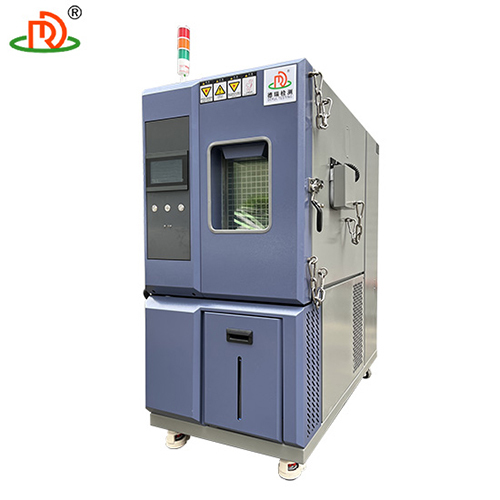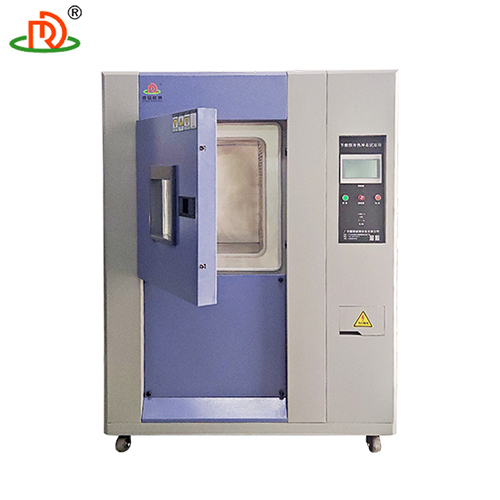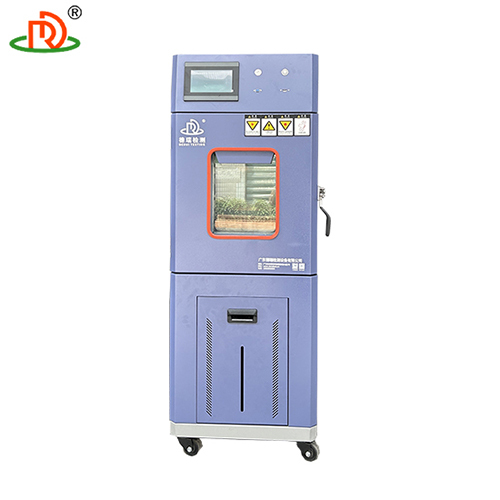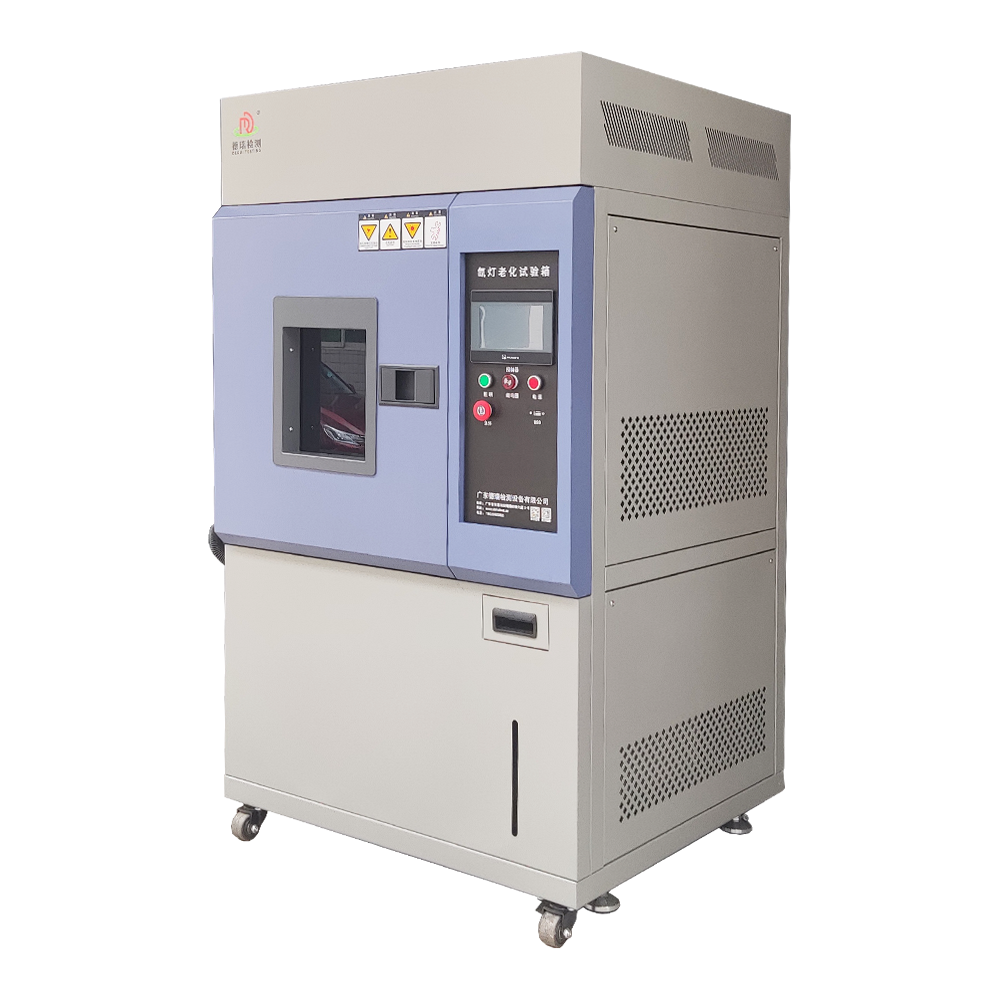Product Description
| Model | DR-H203-50 | DR-H203-100 | DR-H203-150 |
| Basket internal dimension | 350W*400D*350Hmm (50L) | 500W*450D*450Hmm (100L) | 550W*450D*550Hmm (150L) |
| External chamber dimension | 1230Wx1830Dx1270Hmm | 1380Wx1980Dx1370Hmm | 1420Wx2000Dx1400Hmm |
| High temperature chamber preheating range | Ambient to +160,<35min |
| Low temperature chamber precooling range | Ambient to -50,<70min |
| Test temperature | -40 to +150 |
| Temperature deviation | 3~5 |
| Lifting switch time | 10 seconds |
| Test duration | >30mins in high temperature chamber / low temperature chamber |
| Test hole for cable routing | Diameter 50mm on the left of chamber attach a silicone plug |
| External chamber material | High quality electrolytic steel plate spray with powder, antirust |
| Internal material | SUS#304 stainless steel |
| Thermal insulation material | High quality superfine glass fiber |
| Refrigerant | R404A / R23 |
| Cooling method | Water cooling |
| Power supply | Three phase, 380V, 50Hz |
The thermal shock test chamber is a device used to simulate the performance of materials under extreme temperature changes, widely used in multiple industries to evaluate the thermal shock resistance, thermal stability, and mechanical properties of materials and products under different temperature conditions. The following will provide a detailed introduction to its application scope, refrigeration system, and working conditions.
1 Application scope
The thermal shock test chamber is widely used in the following fields to test different types of materials and products:
one
Electronic industry:
Application: Used to test the performance of electronic components, integrated circuits, circuit boards, connectors, etc. under rapid temperature changes.
Purpose: To evaluate the thermal stability and mechanical performance of electronic components, ensuring their reliability and lifespan under extreme temperature conditions.
two
Automotive industry:
Application: Used for testing automotive interior and exterior materials, plastic parts, rubber parts, electronic components, etc.
Purpose: To evaluate the durability and reliability of automotive components under extreme temperature changes, ensuring their performance under different climatic conditions.
three
Aerospace:
Application: Used for testing composite materials, coatings, electronic devices, etc. for aerospace vehicles.
Purpose: To evaluate the impact resistance and stability of aerospace materials under extreme temperature changes, ensuring their safety during high-altitude and high-speed flight.
four
building material:
Application: Used for testing polymer materials used in construction (such as PVC, PE, insulation materials, etc.).
Purpose: To evaluate the durability and stability of building materials under temperature changes, ensuring their service life under different climatic conditions.
five
packaging:
Application: Used to test the thermal stability and mechanical properties of packaging materials for food, pharmaceuticals, and electronic products.
Purpose: To ensure that packaging materials can withstand temperature changes during transportation and storage, maintaining the integrity and safety of the product.
six
Other industries:
Applications: including chemical, medical equipment, household appliances, etc.
Purpose: To evaluate the performance and reliability of various materials and products under extreme temperature changes.
2 Freezing system
The refrigeration system of the thermal shock test chamber is one of its core components, responsible for providing a low-temperature environment. The following is a detailed introduction to the refrigeration system:
one
Cooling method:
Mechanical refrigeration: a refrigeration cycle system composed of a compressor, condenser, evaporator, and throttling device.
Advantages: High refrigeration efficiency and precise temperature control.
Application: Suitable for test chambers that require rapid cooling and precise temperature control.
Liquid nitrogen refrigeration: utilizing the principle of evaporation and heat absorption of liquid nitrogen for refrigeration.
Advantages: Fast cooling speed, extremely low temperature range (can be as low as -196 ).
Application: Suitable for experiments that require extremely low temperatures and rapid temperature changes.
two
Main components:
Compressor: Provides refrigeration power, usually using scroll or piston compressors.
Condenser: It dissipates the heat from the refrigerant to the environment, usually using air or water cooling methods.
Evaporator: The refrigerant evaporates in it, absorbs heat, and achieves refrigeration.
Throttle device: controls the flow of refrigerant, such as capillary tubes, thermal expansion valves, etc.
three
Cooling medium:
Refrigerants: Common refrigerants include R404A, R507, R134a, etc.
Cooling water: For water-cooled condensers, cooling water needs to be provided.
four
safeguard:
Overload protection: prevent the compressor from running under overload.
High pressure protection: prevents abnormal high pressure in the refrigeration system.
Low pressure protection: prevents abnormal low pressure in the refrigeration system.
3 Working conditions
The working conditions of the thermal shock test chamber are crucial for its performance and reliability. The following are the main working conditions:
one
Environmental temperature:
Requirement: The ambient temperature is usually required to be between+15 and+35 .
Reason: Ensure that the cooling and heating systems of the test chamber can work properly to avoid performance degradation caused by high or low ambient temperatures.
two
Relative humidity:
Requirement: The relative humidity is usually required to be between 30% and 80%.
Reason: To avoid equipment corrosion and electrical failures caused by high humidity.
three
Power supply:
Requirement: A stable power supply, typically three-phase AC, with voltage fluctuations not exceeding 10%.
Reason: Ensure that the equipment can operate normally and avoid equipment damage or test result deviation caused by power fluctuations.
four
Ventilation conditions:
Requirement: Good ventilation conditions to ensure proper functioning of equipment cooling and refrigeration systems.
Reason: To avoid equipment overheating and a decrease in cooling efficiency.
five
Installation space:
Requirement: Adequate installation space to ensure sufficient operation and maintenance space around the equipment.
Reason: Convenient for equipment installation, debugging, and maintenance.
six
Grounding protection:
Requirement: Good grounding protection to ensure safe operation.
Reason: To prevent electrical accidents and equipment damage.
The thermal shock test chamber has a wide range of applications in multiple industries, and its refrigeration system and strict working conditions ensure the efficient operation of the equipment and the reliability of the test results. Choosing a suitable thermal shock test chamber requires comprehensive consideration of application requirements, refrigeration system type, environmental conditions, and other factors. If you have more specific needs or questions, it is recommended to directly contact the equipment manufacturer or professional technical personnel for detailed consultation.










 English
English Spanish
Spanish French
French German
German Italian
Italian Chinese (Simplified)
Chinese (Simplified) Japanese
Japanese Korean
Korean Arabic
Arabic Portuguese
Portuguese